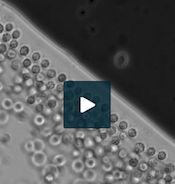Some bacteria make their own tiny magnets to navigate the oceans. But these tiny compasses also show up beautifully in 3-D magnetic resonance imaging (MRI) scans, inspiring UC Berkeley scientists to use them to track the movement of cells in the body or molecules within cells.
Watch videos of magnetic bacteria.

Researchers today label genes or proteins with green fluorescent protein (GFP) — a development honored in 2008 with a Nobel Prize. But GFP is only useful for looking at cells on the body surface or inside transparent embryos.
With a $1 million high-risk, high-reward grant from the W. M. Keck Foundation, a UC Berkeley team plans to implant the relevant genes from magnetotactic bacteria into mammalian cells so they can make their own magnets. Mikhail Shapiro, one of the project’s leaders, says the technique will help scientists explore how tumors spread, immune cells find pathogens or brain cells degenerate.
“If we can transplant the genetic machinery that makes these strong and beautifully magnetic structures into mammalian cells, you would fulfill the dream of a magnetic, non-invasive version of GFP that allows really sensitive imaging of gene expression,” he said.
Arash Komeili, associate professor of plant and microbial biology, is also a project lead.
Related:
Biological Imaging in Animals with Genetically Encoded Magnetic Reporters
